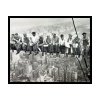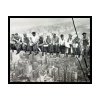prodigy1
Member
Full Member
- Messages
- 90
- Reaction score
- 9
I have been doing metal internal frames over implants and was wondering if anyone else is doing this over implants for strength. They are inexpensive but is this something other labs do?
From the look of the flat ridge there should be plenty of inter occlusion space. The bulk of that bar with the over casting is going to make setting the ant. teeth very difficult. Also if the client is going to use a Hybrid tooth it may be very difficult not to grind all the way through the PMMA which will complicate the bonding.
.
I charge between 50-75$ is this a fair price.
Here is what I am talking about.




Thats a strong beam, if you turn the model round and view carefully from the other side you'll see this - you may need some loupes or optics
Albert, respondants don't know the dimensions and we can only guess. We don't know the dimensions and extensions of the base or of the occlusal table. We don't know the height available anteriorly or the inclination. The locator caps give us a starting point from which to make known our observations. We don't know what's opposing either.
Comments are just a knee-jerk reaction to immediate impressions. If the job is going to carry only one premolar and one molar on each side then rotational stress isn't going to be a real issue. Will the doctor and the patient be satisfied with the end result, and will it stand the test of time - that's what matters most. We're making the patient a smiling and eating device after all - not a spaceship!
ps - the price is too cheap




